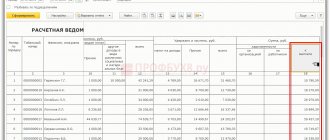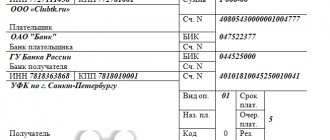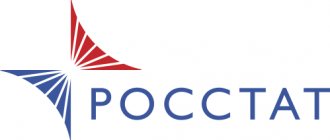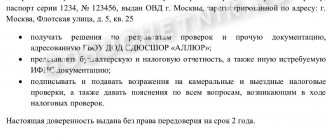Start of business
An individual has the right to carry out cargo transportation after registering the organizational form of an individual entrepreneur. It is necessary to follow a certain sequence of actions:
- Registration of a TIN in the absence of a previously assigned number. The TIN is provided by the registration authority of the Federal Tax Service based on the person’s application. When opening an individual entrepreneur and there is no TIN, the number is assigned unconditionally, without application.
- Opening an individual entrepreneur. Registration is carried out on the basis of an application form P21001. The application is accompanied by a copy of the passport and TIN certificate (if available), and a payment document confirming payment of the state duty.
- Choosing the optimal taxation system. To use a special regime, an application for its use is submitted when opening an individual entrepreneur. A person who has not applied for a special regime uses OSNO.
Next, the individual entrepreneur needs to register (if desired) a seal, open a bank account, receive letters with statistics codes, registration numbers in funds.
Selecting a tax regime
There are several modes available for individual entrepreneurs. The default system is the main system, but it is very complex and in most cases unprofitable. Therefore, entrepreneurs usually choose one of the special modes. Each has its own rules for calculating the tax base and the procedure for accounting for contributions paid for insurance. Below are the features that need to be taken into account when calculating.
USN Income minus expenses
The conditions for applying the simplified tax system are as follows:
- no more than 100 employees;
- annual income - no more than 150 million rubles;
- the residual value of the property is also no more than 150 million rubles.
The tax base for such an object of taxation is equal to the difference between revenue and costs: 7,800,000 - 6,600,000 = 1,200,000 rubles. Insurance premiums are included as expenses.
This is useful
- Use the tax calculator to choose the optimal tax system.
USN Income
The conditions for using this mode are the same as described above. The tax base is the entire income of the individual entrepreneur; expenses are not taken into account. From the tax amount, you can deduct insurance premiums that the entrepreneur paid for himself and for the employee. However, the tax can be reduced by no more than 50%. In the example, the deduction amount will be: 40,874 + 75,000 + 120,000 = 235,874 rubles.
Patent (PSN)
The PSN tax is equal to the cost of the patent and amounts to 6% of the potential income of an individual entrepreneur for this type of activity in a specific territory. The value of this income is established by the municipal administration. To determine the amount of the fee for a patent, the Federal Tax Service has a special service.
Note!
From 2022, entrepreneurs on PSN can reduce the tax (patent cost) by the amount of insurance premiums paid for themselves and their employees. The rules are the same as for individual entrepreneurs on the simplified tax system with the object “income”.
For the individual entrepreneur from the example, for the entire 2022, a patent for cargo transportation will cost 69,240 rubles before deduction of contributions. Since the individual entrepreneur has employees, the cost of the patent can be reduced by 50% due to insurance contributions. Therefore, the payment will be 34,620 rubles.
In addition to the described regimes, there is another one - NPA, which stands for professional income tax. But it has a number of restrictions, for example, the maximum income is no more than 2.4 million rubles, a ban on hiring employees. Therefore, it is not suitable for the individual entrepreneur from our example.
Codes used for cargo transportation
The planned type of activity of the individual entrepreneur in cargo transportation must be designated by the Federal Tax Service. If you have a registered individual entrepreneur but the registration card does not contain the corresponding OKVED, changes must be made. An application form P24001 is submitted to the registration authority with the addition of a list of OKVED codes indicating the types of commercial activities used.
The correct code is important for licensing. To determine the code, information from the OKVED 2 reference book (OK 029-2014) is used. The previously approved classifier is no longer valid. The predominant type of activity is noted as the main code. When making changes, it is allowed to change the main view.
An individual entrepreneur planning to engage in cargo transportation must declare the conduct of activities in accordance with OKVED 49.41 or 49.42 used in 2022.
| OKVED code | Characteristic | Addition |
| 49.41 | Activities of road freight transport, including cargo transportation by specialized or non-specialized vehicles and rental of freight transport with a driver | Provides for the transportation of all types of cargo, including dangerous, special purpose, containers and others |
| 49.42 | Providing cargo transportation services | Includes relocation services provided to legal entities or individuals |
Waybill required when operating transport
Individual entrepreneur services for cargo transportation are accompanied by the issuance of documents, the main of which is a waybill. The document is issued to the driver for a period of 1 day to 1 month. Based on the data from the waybills, the consumption of fuel and other types of fuel and lubricants, and indicators of driver remuneration are calculated. The document is also required in the case of transport management by the individual entrepreneur himself. In accounting, unified forms 4-C, 4-P, PG-1 are traditionally used.
Based on the provisions of Order of the Ministry of Transport dated September 18, 2008 No. 152, the enterprise has the right to use independently developed forms of waybills. An individual entrepreneur can take a unified form as a model, modifying the form to suit the conditions of business. The main condition for using your own forms is the presence of the required details.
| Mandatory information | Data Composition | Description |
| Waybill details | Document name and number | The sheets are numbered in accordance with the accounting log |
| Validity | The start and end dates of the sheet validity period are indicated | In sheets issued for 1 day, indicate 1 date |
| Owner information | The individual entrepreneur indicates the basic details of the enterprise | The data includes full name, registration address, OGRNIP number, telephone |
| Vehicle information | Enter the type and registration number of the vehicle; when using a trailer, additional data | In addition to information about the vehicle, it is necessary to indicate the odometer readings, dates and times of departure (arrival) and, if necessary, pre-trip control |
| Driver information | Provide full name information | Indicate the time of pre-trip and post-trip medical examinations |
The waybill information can be supplemented with information about the specifics of cargo transportation and customers. The document refers to primary accounting forms and must be stored in the individual entrepreneur for 5 years.
What documents are needed for registration
To become an individual entrepreneur in cargo transportation, you first need to register as an individual entrepreneur, and then register as a taxpayer on the PSN. To open a cargo transportation business, you will need to prepare (Article 22.1 of RF Law No. 129-FZ):
- a signed individual entrepreneur application for individual entrepreneur registration in form No. P21001 (Order of the Federal Tax Service of the Russian Federation No. ED-7-14 / [email protected] dated August 31, 2022);
- photocopy of personal passport;
- a receipt for payment of the state duty (if the documents are submitted in paper form immediately to the tax office at the place of registration). If the application is submitted through the Federal Tax Service website, the State Services portal, the MFC or a notary, there is no need to pay the state fee (Part 32, Clause 3, Article 333.35 of the Tax Code of the Russian Federation).
As a result, the individual entrepreneur will be issued a USRIP entry sheet. Further, in order to become a taxpayer on the PSN, he must, at least 10 days before the start of the application of the PSN, submit a patent application in the form to the Federal Tax Service inspectorate at the place of registration.
Applications to the tax office can be submitted:
- Personally.
- Through your representative under a notarized power of attorney.
- By mail of the Russian Federation - by sending a registered letter to the Federal Tax Service with a list of the contents.
- Through the Federal Tax Service website - for state registration of an individual entrepreneur here, and for a patent here, but if you have your own personal identification number for the individual entrepreneur.
- Through the State Services portal - only an application for state registration of your individual entrepreneur.
The tax office will make an appropriate decision within 5 days from the moment the patent application is accepted for consideration. On the 6th working day, the individual entrepreneur needs to come to the tax office and pick up the finished patent.
FAQ
If you already have an individual entrepreneur and there are debts on it, is it possible to become self-employed?
You don’t have to close your individual entrepreneur and become a NAP payer. You can also close your individual entrepreneur and register as self-employed. In this case, all debts attributed to the individual entrepreneur will either have to be paid off or filed for bankruptcy, but the mere presence of debts does not interfere with the activities of a self-employed citizen.
Is it possible to write off debts for an open individual entrepreneur if there was no activity?
You can write off debt for both open and closed individual entrepreneurs through the bankruptcy procedure.
How to quickly close an individual entrepreneur with debts?
The procedure for closing an individual entrepreneur, both with and without debts, is identical. The only difference is that after the closure of the individual entrepreneur, all debts are transferred to the citizen who no longer conducts his business. It turns out that you first register the closure of an individual entrepreneur, and only after that you pay off the debt or file for bankruptcy of an individual.
Other mandatory documents for cargo transportation
In addition to the waybill, the driver must have:
- Driver's license.
- Vehicle passport.
- Insurance policy on compulsory motor vehicle and other voluntary liability.
- Employment agreement for an individual entrepreneur as a delivery driver. It is acceptable to present a copy of the agreement. In the absence of an agreement, you must have a power of attorney for the right to drive transport.
- Consignment note (Bill of Lading), if goods are transported by an individual entrepreneur or a legal entity. The document reflects the details of the parties, places of dispatch and receipt of cargo, characteristics of the transported goods, weight and other additional data. Can serve as the basis for the receipt of cargo.
- Waybill (TN). Confirms the eligibility of cargo transportation, contains only the transport section. The document contains special notes from the shipper.
- Instruction to the forwarder establishing a list of services.
- Forwarding, warehouse receipt, power of attorney for cargo.
- Permission to transport cargo with special characteristics - oversized, dangerous goods.
The driver's kit includes other accompanying documents, determined by the type of cargo being transported. When transporting products, you need a sanitary passport, animals - a veterinary passport, alcohol-containing products - a certificate of technical specification and other documents.
Forms of taxation for cargo transportation
When carrying out cargo transportation, an individual entrepreneur has the right to choose one of the permitted types of taxation. Applicable:
- Generally installed system. It has the most extensive document flow and is used when it is necessary to present invoices to the customer with VAT included. The basic personal income tax rate is 13%. There are no restrictions on the number of transport units or the number of employees.
- Simplified system. Allows you to choose one of 2 tax schemes, differing in rates and the need to account for expenses. A rate of 6 or 15% applies. There are restrictions on revenue (150 million rubles) and the number of employees (100 people). The limitation on the value of property does not apply to individual entrepreneurs due to its recognition as the property of an individual.
- UTII. A convenient mode for cargo transportation that does not require maintaining a large number of primary documentation. The regime is characterized by imputed income, the amount of which depends on the number of vehicles operated. The downside of the system is the need to pay tax from the moment of registration as a UTII payer until the day of deregistration. It has restrictions on the number of vehicles (20 transport units) and employees (100 people).
- PSN. Applicable only to individual entrepreneurs through the acquisition of a patent. The payment amount at a rate of 6% depends on the estimated income established in the region. The entrepreneur independently chooses the validity period of the patent for a period of 1 to 12 months throughout the year. It has a maximum limit on revenue (60 million rubles) and number (15 people). The number of vehicles is not limited. The activities are carried out in the territory of the patent registration region.
The UTII and PSN systems are used if regimes for the selected type of activity are applied in the region. Starting from 2022, the special UTII regime will be abolished.
According to the Minister of Finance of the Russian Federation, the UTII regime turned out to be not the most effective in terms of work.
Minister of Finance of the Russian Federation A.G. Siluanov
The moment of transition to the planned taxation system is determined by the regime chosen by the individual entrepreneur. The transition to the simplified tax system is carried out when opening an individual entrepreneur or from the beginning of the calendar year; the use of UTII is allowed from any date. OSNO is applied by default; the mode can be combined for certain types of activities with UTII, PSN.
Self-employment for transportation
If an individual entrepreneur does not have hired personnel, then, in addition to PSN, he has the right to switch to self-employment in accordance with Art. 4 of the Law of the Russian Federation 422-FZ. However, his possible income can be no more than 2,400,000 rubles. in year.
You can become self-employed online from your phone (tablet) with Internet access. To do this you need:
- Download the Federal Tax Service mobile application “My Tax” on your smartphone (from Google Play or App Store). Using your smartphone, take a photo of your personal passport, as well as take your photo with your smartphone camera, or use access to your taxpayer account on the Federal Tax Service website.
- Use the websites of authorized banks, Internet platforms (for example, Sberbank online).
Self-employed people pay tax on professional income. The NAP rate is:
- 4% - when delivering cargo to individual contractors;
- 6% - when working with legal entity clients (organizations).
However, after registration, a self-employed person is entitled to a tax deduction in the amount of RUR 10,000. Eventually:
- If the tax is calculated at a rate of 4%, the deduction is equal to 1% of the income received by the individual entrepreneur (the tax base for the NAP).
- If NPA is accrued at a rate of 6%, the deduction is 2% of the NPA base.
In 1 month self-employed earned 50,000 rubles. If, under the contract for the carriage of goods, the contractors of the self-employed were individuals, then the amount of the NAP will be equal to 2,000 rubles. (4% tax on RUR 50,000). The tax office will provide a deduction in this way - it will reduce the amount of NAP by 1% of the tax base (that is, by 500 rubles. 1% * 50,000 rubles). As a result, the individual entrepreneur will need to pay NAP in the amount of 1,500 rubles. (2,000 rub. – 500 rub.), not 2,000 rub. Moreover, the tax deduction will decrease by 500 rubles. (from 10,000 rubles to 9,500 rubles).
This reduction will occur until the amount of deductions reaches RUR 10,000.
If for some reason the cargo transportation was canceled and the money was returned to the customer, it is withdrawn from circulation. The overpaid amount of NPD is taken into account in the next month and minus.
However, it is still better for a businessman to start by opening an individual entrepreneur on a patent. After all, many counterparties prefer to draw up cargo transportation contracts with individual entrepreneurs or legal entities, rather than with self-employed individuals.
Articles:
Can a pensioner open an individual entrepreneur - benefits when opening in 2022
How an individual entrepreneur can become an employer in 2022 - step-by-step instructions
Sanctions imposed for violation of transportation requirements
Articles 12.3 and 12.31.1 of the Code of Administrative Offenses provide for sanctions imposed on individual entrepreneurs in the form of an administrative fine.
Important! If violations are detected in an individual entrepreneur, subject to the sanctions of Art. 12.31.1 of the Administrative Code, the amount of the fine is the same as the amounts imposed on legal entities.
| Article of the Administrative Code | Violation | Fine amount |
| Clause 1 Art. 12.3 | The driver does not have documents to drive the vehicle | 500 rubles (warning possible) |
| Clause 2 art. 12.3 | The driver does not have a waybill or TTN documents | 500 rubles (or warning) |
| Clause 2.1 art. 12.3 | Transportation of goods without the right to carry out activities | 5,000 rubles per driver |
| Clause 2 art. 12.31.1 | Transportation of goods by motor transport without medical examinations of the driver | For citizens in the amount of 3,000 rubles, for an official - 5,000 rubles, individual entrepreneurs - 30,000 rubles |
| Clause 4 art. 12.31.1 | Transportation of goods in violation of safety conditions | For a driver - 2,500 rubles, for an official - 20,000 rubles, individual entrepreneur - 100,000 rubles |
UTII
The single tax on imputed income is considered a more favorable tax regime for cargo transportation. But here a lot depends on the place of residence of the individual entrepreneur. The fact is that UTII does not apply everywhere. Whether to introduce this system on the territory of a city or other settlement is decided by local authorities. They also determine the list of activities for which this regime is introduced. However, the basic areas of business for “imputation” are prescribed in the Tax Code (Article 346.26), and the transportation of goods is included in this list. But there is a limitation - individual entrepreneurs should have no more than 20 machines.
The default UTII rate is 15%, although local legislators can reduce it to 7.5%.
The tax base for each month is calculated as follows: Basic profitability * Physical indicator * K1 * K2
The parameters of this formula mean:
- The physical indicator for cargo transportation is the number of vehicles.
- Basic profitability is the amount of imputed income that an entrepreneur can receive per month per unit of physical indicator.
- K1 is a deflator coefficient, which is calculated annually by the Ministry of Economic Development depending on the level of inflation.
- K2 is a reduction coefficient that is set by local authorities to ease the tax burden. It may vary depending on the type of activity and location, but no more than 1.
If the number of cars does not change during the year, then UTII can be calculated using the formula: Tax base for the month * 12 months * 15%. To calculate UTII for individual entrepreneurs from the example, we will collect all the necessary data in a table.
| Index | Meaning |
| Physical indicator (Article 346.29 of the Tax Code of the Russian Federation) | 3 cars |
| Basic profitability (Article 346.29 of the Tax Code of the Russian Federation) | 6,000 rubles per month for 1 car |
| K1 in 2022 (order of the Ministry of Economic Development of Russia dated October 30, 2018 No. 595) | 1,915 |
| K2 for cargo transportation in the city of Chekhov (decision of the city Council of Deputies of November 9, 2012 No. 71/10) | 1 |
| Tax rate | 15% |
| Number of months | 12 |
The calculation will look like this: 6,000 * 3 * 1.915 * 1 * 12 * 15% = 62,046 rubles.
As in the simplified system with the “Income” object, on UTII you can deduct insurance premiums from the tax amount. The rule is the same: if an individual entrepreneur has employees, then he can reduce the tax due to contributions by 50%. This means that the entrepreneur will have to pay a total of 62,046 / 2 = 31,023 rubles to the budget.
Errors made in accounting for cargo transportation
Mistake No. 1. When accounting for individual entrepreneurs in cargo transportation, expense accounting is often required. Documented and economically justified expenses are used when calculating the tax base. It is a mistaken belief that fuel costs can be written off based on actual expenses. When writing off, it is necessary to take into account expense norms and the actual mileage of the vehicle. If fuel consumption exceeds the technical documentation norm, it is necessary to take into account the test mileage data.
Mistake No. 2. Individual entrepreneurs using a common system often do not have contracts with companies that require service provider VAT. continues to allocate VAT. Wrong position. An individual entrepreneur with a small transportation turnover can claim exemption from VAT.
Specifics of the automotive business
An entrepreneur who transports goods can choose from the main tax system (OSNO), simplified system (STS), unified tax on imputed income (UTII) and patent system (PSN).
OSNO is rarely used by individual entrepreneurs, since it is unprofitable - the tax burden is too high. On the general system, you need to pay VAT at a rate of 20% on revenue, and on your own net income - also 13% in the form of personal income tax. Typically, the main regime is used when it is necessary to conduct business with large companies that pay VAT. But more often, individual entrepreneurs work with small businesses like themselves or with individuals. In this case, there is no need to be a VAT payer, so the entrepreneur chooses some preferential tax regime.
Read about the choice of tax system for cargo carriers in 2022 in the context of the abolition of UTII in this article.
Before moving on to calculating individual entrepreneur taxes, we will highlight the features of the cargo transportation sector. To understand which tax system to choose, you need to estimate the approximate level of business expenses. And they will be like this:
- service costs - repairs, maintenance, tire replacement;
- depreciation - writing off part of the cost of machines to the cost of services;
- if the transport is rented, then the rent;
- the cost of gasoline;
- wages of drivers and other workers;
- insurance premiums for employees, as well as for insurance of the individual entrepreneur himself;
- overhead costs - payment for communications, parking, etc.;
- auto insurance;
- taxes and other obligatory payments.
In other words, there will be a lot of expenses. It is difficult to determine in advance what their share will be. To calculate, you can focus on the following values: expenses - 70%, income 30% of revenue. But this is an almost ideal indicator, and it is very difficult to achieve it in practice. In recent years, the cargo transportation market has been stagnant. The reason for this is the crisis in the Russian economy, high competition, additional payments (Platon system) and the constant increase in fuel prices. Therefore, the profitability of cargo transportation has seriously decreased.
Answers to common questions
Question No. 1. Does an individual entrepreneur need to obtain a license to provide cargo transportation services?
A license issued by the Ministry of Transport and Communications is required when transporting goods outside the country or especially dangerous goods. In other cases, transportation is carried out without additional permission.
Question No. 2. Is it necessary to indicate OKVED for freight transportation if an individual entrepreneur plans to provide freight transport for rent?
Renting a vehicle from a lessor is not considered cargo transportation.







